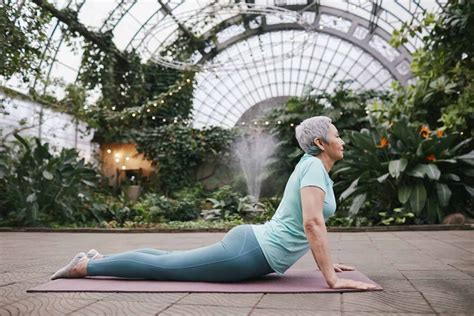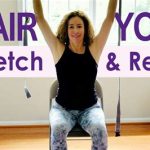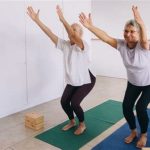Unlocking Flexibility in Seniors: Can Yoga Be the Key?
Yoga has long been heralded as a practice for mind-body wellness, but for seniors, its potential to improve flexibility is particularly significant. As we age, maintaining flexibility becomes critical for both mobility and quality of life. This article explores whether yoga can be an effective tool in helping seniors maintain or regain their flexibility, and how its benefits extend beyond physical improvements to encompass mental and emotional well-being.
Introduction: Understanding Flexibility in Aging
Aging is often accompanied by a natural decline in flexibility, which affects balance, posture, and movement. While this decline is inevitable, there are ways to slow it down and even reverse some of its effects. Among the many tools available, yoga stands out for its holistic approach to body conditioning. However, can yoga really improve seniors’ flexibility? In this article, we examine the evidence, discuss practical applications, and provide actionable guidelines for incorporating yoga into seniors’ routines.
Key Concepts in Flexibility and Aging
To better understand how yoga impacts flexibility, it’s crucial to clarify the key concepts:
- Flexibility: The ability of a joint or muscle to move through its full range of motion.
- Age-related stiffness: A decrease in flexibility caused by changes in connective tissues and the natural wear and tear of aging.
- Muscle elasticity: The capacity of muscles to return to their original length after being stretched, which declines with age.
- Yoga’s holistic approach: Combining stretching, breath work, and meditation to target both the body and mind.
Historical Context: Yoga’s Evolution and Adaptation
Yoga originated in ancient India as a spiritual and philosophical practice. Over the centuries, it has evolved into a widely accepted form of physical exercise. In the early 20th century, Western adaptations of yoga focused more on the physical benefits, which has led to modern-day yoga programs specifically designed for seniors.
Historically, yoga was not age-specific, but today, there are adaptations for older adults, such as chair yoga, gentle yoga, and restorative yoga. These modifications address the unique challenges seniors face, such as joint pain, limited mobility, and balance issues.
Current State Analysis: Yoga’s Role in Enhancing Flexibility for Seniors
There is growing evidence to support the idea that yoga can significantly improve flexibility in seniors. Clinical studies have shown that even beginners can benefit from gentle yoga practices, especially those that emphasize slow, deliberate stretching. By focusing on core muscle groups, yoga increases range of motion, reduces stiffness, and enhances overall mobility.
A comparative analysis between seniors who practiced yoga and those who engaged in general stretching exercises revealed that yoga participants experienced greater improvements in flexibility and balance. Furthermore, yoga’s incorporation of deep breathing and mindfulness helps reduce stress, which can contribute to muscle tension.
Practical Applications: How Seniors Can Safely Practice Yoga
Yoga is accessible for most seniors, but there are some practical considerations to ensure safety and effectiveness:
- Start slow: Seniors should begin with gentle or beginner-level classes to avoid injury.
- Use props: Blocks, straps, and chairs can be used to modify poses and accommodate physical limitations.
- Focus on breathing: Deep breathing helps relax muscles and improve oxygen flow, aiding flexibility.
- Consistency is key: Regular practice is essential for lasting improvements in flexibility.
- Consult a physician: It’s advisable for seniors to get medical clearance before starting any new exercise regimen, including yoga.
Case Studies: Real-World Examples of Yoga Improving Flexibility in Seniors
Several case studies highlight yoga’s effectiveness for improving flexibility in seniors:
| Case | Details | Outcome |
|---|---|---|
| Case 1: Margaret, Age 72 | Margaret struggled with lower back stiffness. After 6 months of practicing chair yoga, she reported a 30% increase in her ability to bend and twist without discomfort. | Significant reduction in stiffness and improved range of motion. |
| Case 2: Tom, Age 65 | Tom, a former athlete, had difficulty with flexibility due to arthritis. A customized yoga program focused on hip and knee stretches helped him regain some of his lost flexibility. | Better joint mobility and decreased pain in daily activities. |
| Case 3: Ruth, Age 79 | Ruth, who uses a walker, participated in restorative yoga. Over time, she was able to improve her posture and balance, reducing her fear of falls. | Improved confidence in mobility and balance control. |
Stakeholder Analysis: Who Benefits from Yoga for Seniors?
The benefits of yoga for seniors extend beyond the individuals practicing it. Stakeholders include:
- Seniors themselves: Improved flexibility, better mobility, and enhanced quality of life.
- Healthcare providers: Reduced need for medical interventions related to mobility issues.
- Caregivers and families: Lessened caregiving burdens as seniors become more independent.
- Senior centers and gyms: Increased participation in group activities, promoting community and mental health.
Implementation Guidelines for Yoga Programs Targeting Seniors
For successful integration of yoga into senior health routines, the following guidelines should be considered:
- Offer age-appropriate classes: Focus on gentle yoga or chair yoga specifically designed for seniors.
- Use trained instructors: Teachers should have experience working with seniors and be aware of common health issues like arthritis or osteoporosis.
- Start with simple poses: Avoid advanced poses that could lead to injury; instead, emphasize foundational stretches that improve flexibility.
- Promote gradual progress: Encourage seniors to focus on incremental improvements rather than pushing too hard, too fast.
- Incorporate relaxation techniques: This can help reduce anxiety about physical limitations and improve overall mental well-being.
Ethical Considerations in Promoting Yoga to Seniors
While yoga is generally safe, there are ethical concerns related to promoting it as a “cure-all” for aging. It’s essential to avoid overpromising results, especially in cases where seniors may have underlying medical conditions. Yoga should be presented as a complementary practice rather than a replacement for medical treatment.
Additionally, affordability and access to classes should be considered, particularly for seniors on fixed incomes or those living in rural areas. Programs should aim to be inclusive and accessible to all seniors, regardless of their physical or financial limitations.
Limitations and Future Research
While existing research supports the idea that yoga can improve flexibility in seniors, there are limitations:
- Lack of long-term studies: Most studies on yoga’s benefits for seniors are short-term, and there is limited data on the long-lasting effects of yoga practice on flexibility.
- Individual variability: Not all seniors experience the same degree of flexibility improvement, and results can vary depending on pre-existing conditions.
- Need for more diverse research: The majority of studies focus on Western populations, and there’s a need for more global, culturally diverse research.
Future research should focus on the long-term benefits of yoga for seniors, including its impact on other aspects of physical health, such as cardiovascular function and bone density. Additionally, studies should investigate the most effective yoga practices for different senior populations based on health status and fitness levels.
Expert Commentary: Holistic Perspectives on Yoga and Senior Flexibility
Experts agree that yoga offers a promising approach to enhancing flexibility in seniors, but its true value lies in its holistic benefits. As Dr. James Keller, a geriatric physician, explains, “Yoga not only improves physical flexibility, but it also enhances mental agility and emotional resilience, making it an ideal practice for seniors seeking to maintain independence and well-being.”
However, yoga should be viewed as part of a broader lifestyle approach that includes proper nutrition, strength training, and regular medical check-ups. As noted by Alice Meadows, a certified yoga instructor for seniors, “Flexibility isn’t just about muscles and joints. It’s about adapting to change, both physically and mentally.”








